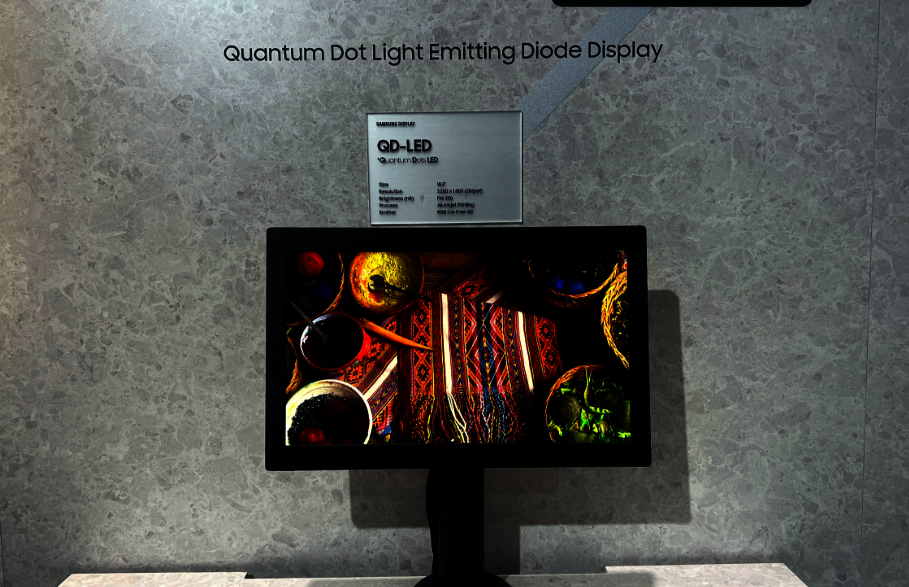Just days after TCL’s display making arm revealed its first QD-LED prototype products, Samsung Display has showcased its own advancements on a new technology that many believe could one day replace OLED panels in premium televisions.

QD-LED, also known as QD-EL, NanoLED and QDEL, is a new kind of display technology that sees electricity applied directly to the quantum dots, without any LEDs or OLED pixels required. The technology was originally known as QLED among researchers, only to adopt those alternative names when the original term was appropriated for marketing purposes by Samsung and others.
The technology has been in development for some time, but Samsung’s latest innovations, showcased at SID Display Week, suggest that it is getting closer to prime time. The company revealed its largest-ever QD-LED display, which measures 18-inches diagonally and supports a 3,200 x 1,800 resolution. It’s still on the small side, and it’s not even that bright at just 250 nits, but its existence alone is nevertheless a demonstration of rapid progress with the technology, which many believe could one day supplant OLED and Mini-LED as the display tech of choice for premium TVs and monitors.
QD-LED is a self-emissive display technology, just like OLED, which means the light is outputted directly via its QD-RGB pixels. According to Samsung, this enables it quantum dots to display an extremely wide colour range and superior colour accuracy.
It’s still really not clear just how much of an improvement QD-LED will be on OLED, but in theory it should be able to reproduce similar quality colours, contrast and black levels, but without any of the downsides. While OLED pixels can degrade over time as a result of their being organic, the QD-LED pixels won’t suffer in this regard. Analysts say the technology also promises to be more energy efficient, and can potentially deliver even richer colours with higher brightness once it has been perfected.
Like TCL’s CSOT, Samsung Display manufactured its QD-LED displays using the Inkjet Printing process. According to the company, the strength of QD-LED lies in the “stable material properties of quantum dots”, which translate to a more efficient and lower-cost production process when manufactured in large volumes. The lower costs alone could mean QD-LED has a future in TVs, even if it’s ultimately unable to outperform OLED.
Still, we don’t expect to see any QD-LED TVs on the market just yet. The technology is still a prototype, and although there have been some promising developments recently. Nanosys, the company that invented QD-LED technology, was acquired by a Japanese conglomerate called Shoei Chemicals last year, and its new parent company promised to accelerate QD-LED’s development. It said at the time it’s hoping to move QD-LED displays into full production by 2025 or 2026. If it can do so, we could expect the first QD-LED products to arrive shortly afterwards.